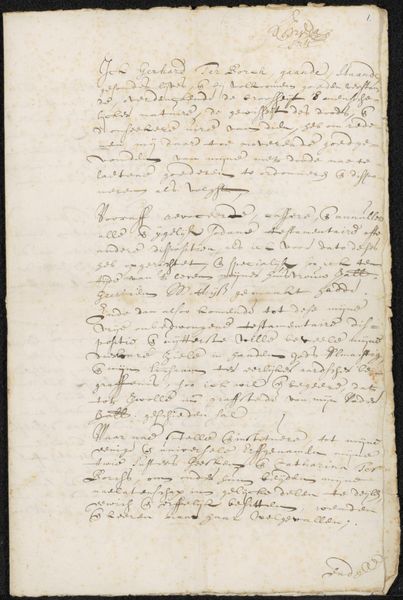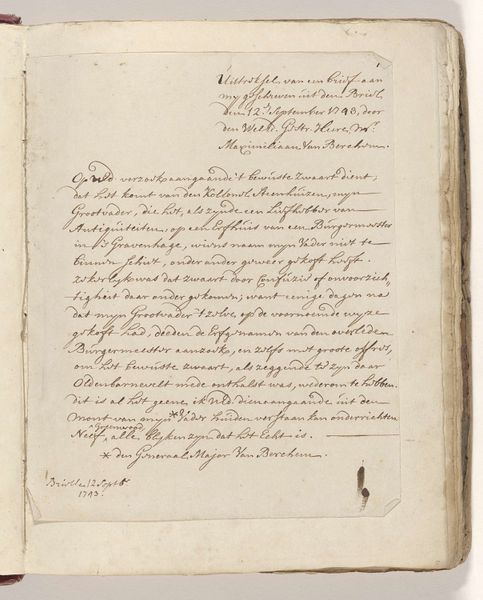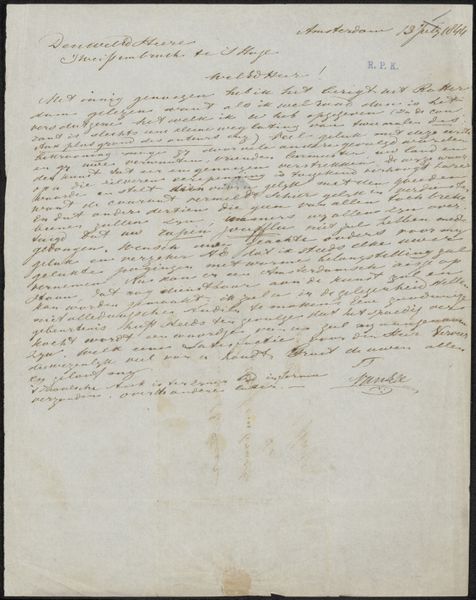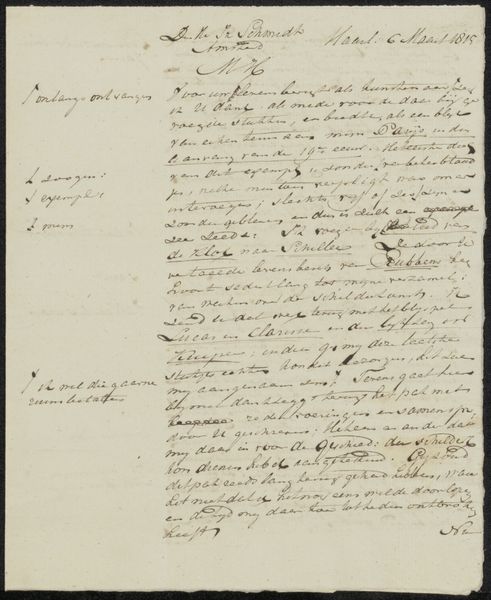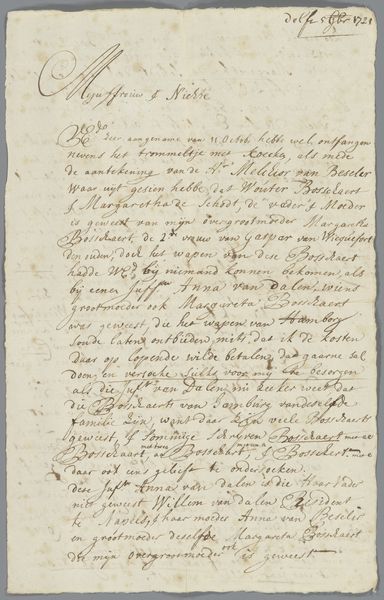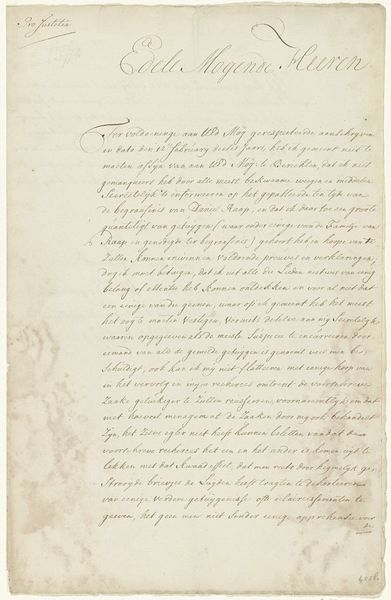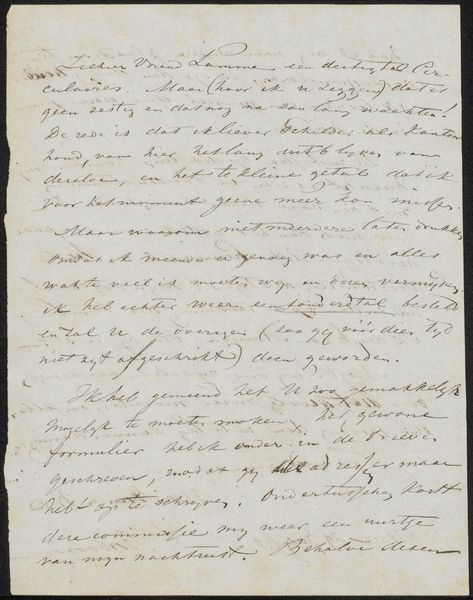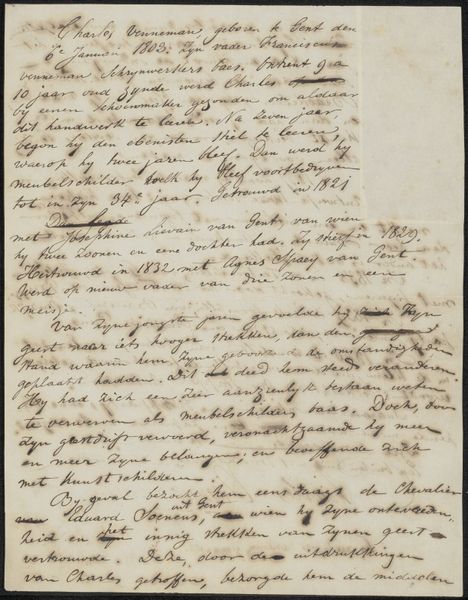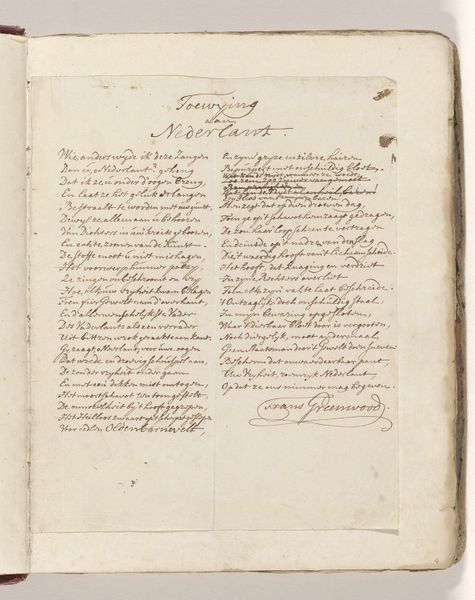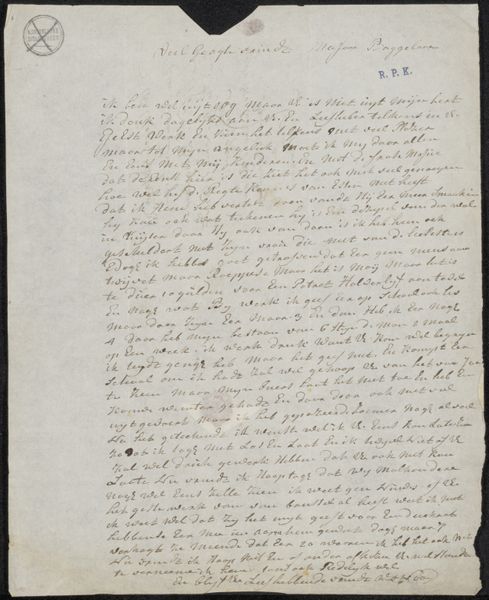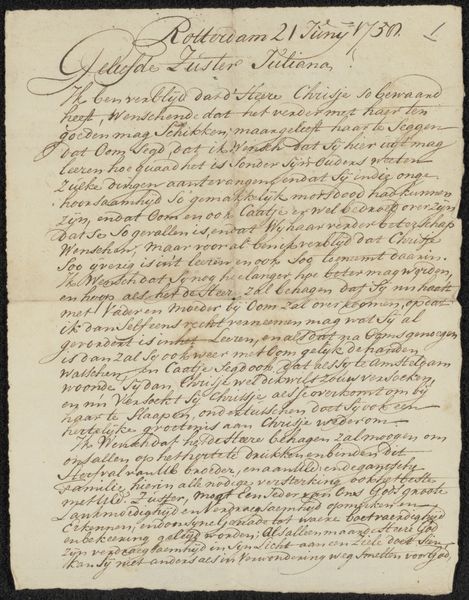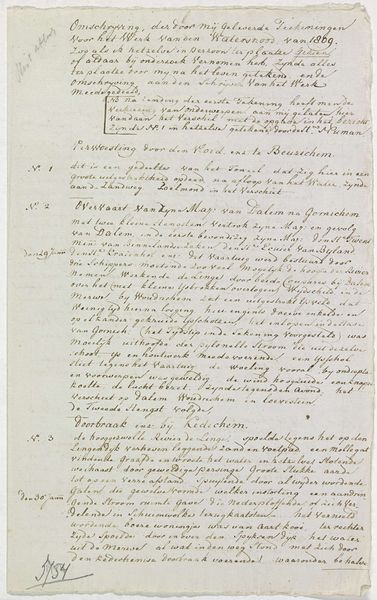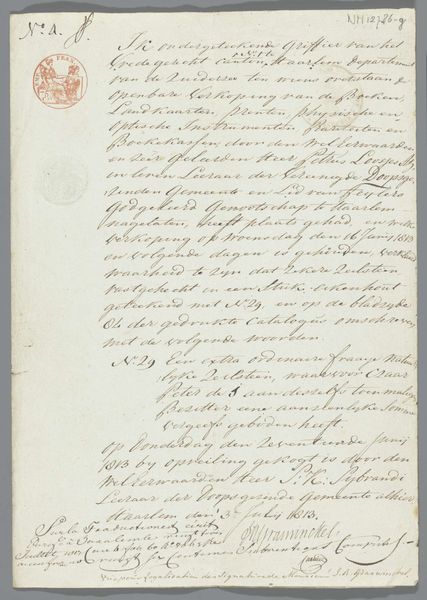
Verslag van het verblijf van Willem V en Wilhelmina van Pruisen op Texel, 1768 1768
0:00
0:00
drawing, paper, ink
#
drawing
#
dutch-golden-age
#
paper
#
ink
#
history-painting
Dimensions: height 315 mm, width 202 mm
Copyright: Rijks Museum: Open Domain
Curator: Our next piece is a rather unique one, a drawing rendered in ink on paper, titled "Verslag van het verblijf van Willem V en Wilhelmina van Pruisen op Texel, 1768." It’s a historical record created in 1768. Editor: My first impression? Overwhelmingly…textual. A field of script, looping lines and dense information. It almost transcends its function as a record and becomes a texture, a pattern. Curator: It is indeed dominated by script, which in itself tells a story about record-keeping and historical narrative in that era. The Dutch Golden Age saw a flourish in both artistic skill and mercantile record keeping. It showcases an embrace of ornate penmanship as something intrinsically valuable, even aesthetically. Editor: I notice that lack of deliberate artistry contributes to the sense of immediacy. The aesthetic interest is perhaps a modern projection; what strikes me is more the document’s raw presence. Curator: Exactly! Consider the context – the visit of Willem V and Wilhelmina to Texel would have been a significant event, potentially fraught with political implications. The immediacy of recording could have held precedence, a true capture in words of an event as it unfolded. Editor: It does feel very ‘of the moment’. The handwriting adds to that effect, reflecting the scribe’s speed, thoughts, and probably working conditions! Curator: I'm intrigued by what is *not* said, as much as what is. The very act of documenting this event – who decided what was important enough to record? Was this a private or public record? And the selection of this precise visual, the use of writing, what does it all signal culturally? Editor: It prompts one to ask what power is present, and how this seemingly functional work reveals the priorities and societal norms around governance and archiving. It brings to mind our modern relationship with ‘archiving’ or documentation - and how something like this drawing feels entirely unique when contextualized. Curator: Indeed. Considering the dense character of the artwork, you come to reflect how, although the artist’s name remains unfortunately unknown, their legacy persists. Editor: For me, it brings to life how one of a kind all cultural works remain as unique instances in time.
Comments
No comments
Be the first to comment and join the conversation on the ultimate creative platform.
